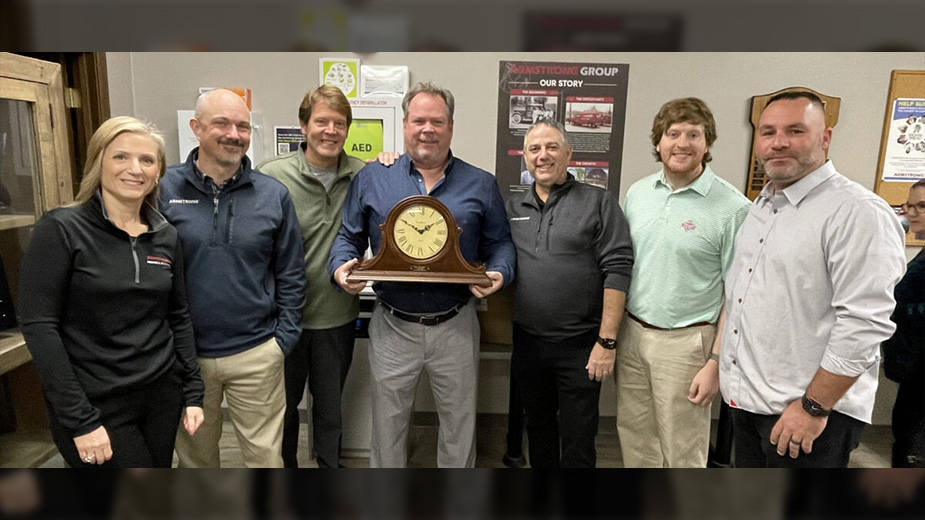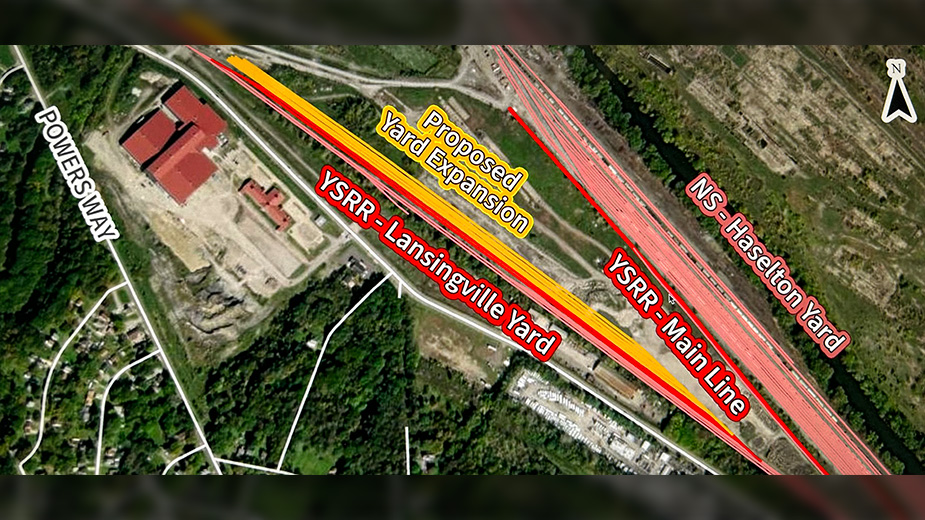Studios Still Track Bands but Digital Alters Business
YOUNGSTOWN, Ohio — Flipping through the relics throughout his studio, Gary Rhamy is quick to pull out a record or point to a poster and tell stories about the artists who have come through Peppermint Productions over the last 45 years.
He pulls out one, “70 Years of Hits” by Frank Yankovic – the first album to win the Grammy for Best Polka Album. It’s signed with a thank you to Rhamy. Many polka artists, one of the more common genres Peppermint sees these days, want to know where Yankovic stood when he recorded here.
Another, Ray “Boom Boom” Mancini’s dancercise album, “Knockout Bodies,” is always good for a laugh after Rhamy tells artists the first dancercise album to go platinum was recorded here three years before Jane Fonda kicked off the craze in the early 1980s.
But one of his favorite performances is from just a couple of years ago with Youngstown native Angelo Babbaro. The singer, whose style is reminiscent of Frank Sinatra and the Rat Pack, wanted a live-performance feel for this particular album.
“So he brought in something like an 18-piece band,” Rhamy says from behind his soundboard. “And it was absolutely incredible. Everyone was in sync and it blew me away. There’s a video of it on YouTube. It’s great.”
Many artists have come through Peppermint over its 45 years. When the studio opened in 1971, Youngstown was a hotspot for music. National acts came through on their trips between Cleveland and Pittsburgh, sometimes playing small shows downtown. The local scene was blossoming, too, with bands such as Left End and Blue Ash. Both are still touring.
But, things have changed. The music business in the area isn’t what it used to be.
“At one point, you could have put a revolving door in front of the studio. And I wasn’t the only studio around here that could say that,” says Bill Dodd, owner of Mud-Hut Studios in Sharon, Pa. “It’s not just that there are fewer places to play because fewer people pay to see music. It’s that there are fewer bands by a huge margin.”
Last year, he points out, of the Billboard Top 100 songs, more than 90 used backing tracks, eschewing a live band. Young artists today don’t need bands behind them anymore, and therefore, they don’t need to come into a studio to record it all.
The rise of digital techniques, Rhamy says, is the biggest difference between when he opened his studio and today. The old-school way of recording involves reel-to-reel tapes that capture input from up to 24 channels. Once a piece was recorded and put on a master tape, that was it. There were no more chances to edit beyond cutting up the tape or rerecording.
With a computer system, an infinite number of channels are available and correction is as simple as clicking a mouse.
“If a bass has a bad note, rather than having the guy come back in a play it right, you can correct it electronically or sample it from another part and replace it,” Rhamy explains. “Digital has helped us overcome the limitations or complications that analog gave us. I’ve always loved the analog sound, but I love the convenience of digital.”
While advancements in technology have made producers’ jobs easier, they’ve also pinched their business. It’s no hassle for a group of young musicians to buy a few microphones and a recording program for their laptop – along with the equipment to connect the two – and record in their basement.
The difference between doing it at home and in a professional studio, Dodd says, boils down to two things: expertise and environment. Since opening in the early 1990s, Dodd has recorded hundreds of sessions in his studio, two rooms of a Victorian house that are decorated with action figures, Hot Wheels and toys from McDonald’s kids’ meals.
“You’ll be overly critical of your voice and re-record it 16 times [when recording at home]. In here, you perform better once you’re through the butterflies,” he says. “I realized that the décor can make it feel really relaxed rather than like an operating room feel.”
With the widespread availability of recording software, music producers had to update their business models. Locally, many offer mixing and mastering services for those who do record at home to give their tracks a professional sound without small bands having to spend a full day in the studio, often around $50 per hour.
“I don’t discourage people from recording at home because it helps a lot during the preproduction process,” says Nexus Sound Studio sound engineer Keith Kelly. “You can get your ideas down and hear yourself to figure out if you like it. You can tweak it a little bit or bring the tracks in for reference.”
Since it opened in 2010, Nexus has increased its offerings to encompass nearly anything a band could need. It rents lighting equipment for live shows, films music videos, designs album artwork and creates press kits.
The internet, all agree, has changed everything.
“I talked a band out of recording last week, which sounds counterintuitive,” Dodd says, and persuaded them instead to let him record a music video. “No one is going to listen to what you hand them. They want a link to a video that shows you performing. And the video needs to be at a high quality and depict you in the best light.”
In the 2½ years he’s been at Nexus, Kelly observes, distribution has been the biggest shift. Streaming services such as Spotify and Google Play have become commonplace and the easiest way to get music to the masses.
“There are so many that as long as you own your music, you can get it heard around the world,” he says, noting that a presence on the internet often requires the use of video and graphic design.
“People want to launch their careers online and that requires good graphic design, good videos and solid promotion packages,” he says. “You need to have solid content for the online world as well as solid physical content for your shows.”
A video Nexus filmed and produced for Warren-based rapper Kamikaze K-Rob has received more than 225,000 views on YouTube from around the world. The song, too, was recorded at Nexus.
“It’s amazing that we can do something like that in little Warren and have it seen across the world,” Kelly says.
Even as the industry shifts toward do-it-yourselfers, there remains a place for recording studios, all say. It’s part of being in the music business. There’s something appealing about staying up all night in the studio, tweaking notes until the music comes out perfectly.
For many bands, the producers observe, getting into the studio sometimes brings out the best in them.
“It makes them more relaxed and comfortable,”Rhamy says.” When you don’t have the rigidness of other environments, then you feel free to perform better. It can be a very positive thing.”
Adds Dodd, “My job is to allow the band to have an experience. … And they have to have fun, either here or at home. That fun can be a shot of adrenaline.”
Pictured: Gary Rhamy holds Frank Yankovic’s “70 Years of Hits,” the first polka album to win a Grammy, which Rhamy recorded.
Copyright 2024 The Business Journal, Youngstown, Ohio.



